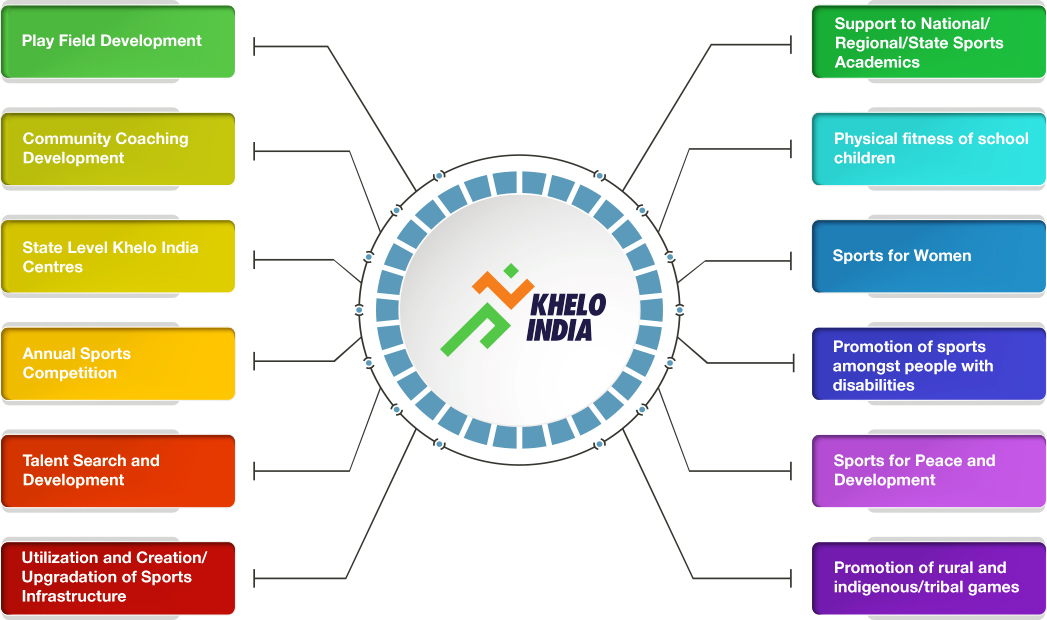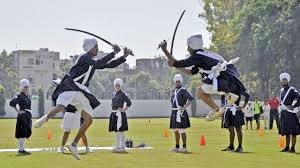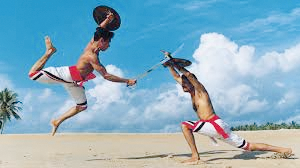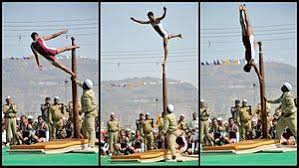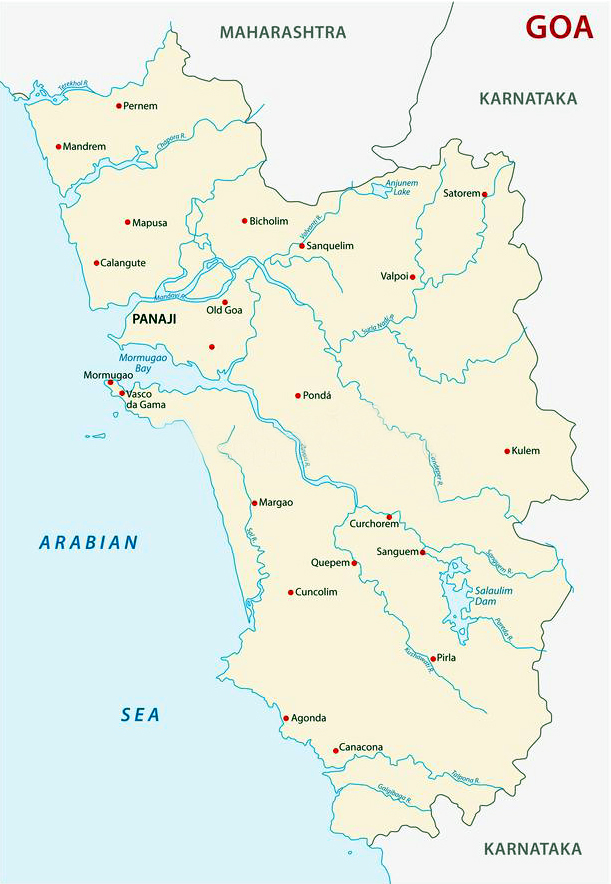Internal Security
Coastal Radar Chain Network
Why in News
India’s efforts are in advanced stages to set up coastal radar stations in Maldives, Myanmar and Bangladesh.
- The radar chain—which will link up with similar systems in India, Sri Lanka, Mauritius and Seychelles—will provide a comprehensive live feed of ship movements in the Indian Ocean Region that can be used by friendly navies.
Key Points
- Coastal Radar Chain Network:
- The aim is to create a network of information and maritime domain awareness in the strategic Indian Ocean Region.
- This will also help in expanding India’s assistance for capacity building to Indian Ocean littoral states.
- The assistance to these countries comes under India's programme called SAGAR - Security and Growth for All in the Region.
- Under Phase-I of the coastal radar chain network, 46 coastal radar stations have been set up across the country’s coastline.
- Under Phase-II of the project, which is currently underway, 38 static radar stations and four mobile radar stations are being set up by the Coast Guard and is in an advanced stage of completion.
- The Indian Coast Guard is a multi-mission organization, conducting round-the-year real-life operations at sea. It operates under the Ministry of Defence.
- The primary aim of surveillance radar design is to detect and track small fishing vessels for Coastal surveillance application.
- However, the radar can also be directly used for VTS (Vessel Traffic management Services) application, harbor surveillance and navigational purposes.
- It will also help in monitoring any illegal activities in the sea.
- Ultimately, the data collected would feed into the Information Fusion Centre for the Indian Ocean Region (IFC-IOR).
- Information Fusion Centre for the Indian Ocean Region:
- The IFC has been established at Gurugram and is collocated with the Information Management and Analysis Centre which is jointly administered by the Indian Navy and Indian Coast Guard.
- The Indian Navy’s Information Management and Analysis Centre (IMAC), set up after the 26/11 Mumbai terror attacks, is the nodal agency for maritime data fusion.
- It will soon become a National Maritime Domain Awareness (NDMA) centre.
- IFC-IOR has established itself as the hub of maritime security information in the IOR through white shipping information exchange agreements with 21 countries and 20 maritime security centres.
- White shipping information refers to exchange of relevant advance information on the identity and movement of commercial non-military merchant vehicles.
- The IFC has been established at Gurugram and is collocated with the Information Management and Analysis Centre which is jointly administered by the Indian Navy and Indian Coast Guard.
- Strategic Indian Ocean Region:
- The Indian Ocean Region, in view of its strategic location as also being home to a vast majority of the world's population, can be considered as the economic highway that drives global commerce.
- With over 75% of the world’s maritime trade and 50% of daily global oil consumption passing through the region; IOR is vital to world trade and the economic prosperity of many nations.
- At any given time, there are close to 12,000 ships in the Indian Ocean Region and 300 fishing vessels that need to be always monitored.
- The IOR is also a fragile environment, with threats such as maritime terrorism, piracy, human and contraband trafficking, illegal and unregulated fishing, arms running and poaching being prevalent.
- Further, there has been a steady rise in the deployment of Chinese research vessels in the Indian Ocean Region.
- Increasing presence of China in the Indian Ocean Region has been a strategic concern for India.
- Recent Related Initiatives:
- The council of ministers of IORA (Indian Ocean Rim Association) countries met virtually in December 2020. IORA is an inter-governmental organisation, established in 1997. India is a member country.
- The four-nation Malabar Exercise involving India, Australia, the USA and Japan was concluded and hosted in two phases by the Indian Navy in the Bay of Bengal and Arabian Sea.
- Earlier this year in March, India joined the Indian Ocean Commission (IOC) as Observer. The Commission is an important regional institution in Western/African Indian Ocean.
Way Forward
- The environmental threat to the marine ecosystem due to climate change and unprincipled depredation of marine resources threatens the very sustenance of some of the small island states in the Indian Ocean. India’s presence in the UN Security Council as a non-permanent member for the next two years and the Presidency of the G20 in 2023 will provide it with the opportunity to highlight the issues of these small island states at multilateral forums.
- Maritime Diplomacy and ‘showing the flag’ forms an important part of regional capacity building. Bilateral and multilateral naval exercises, maritime information-sharing mechanisms, developing common standard operating protocols and showing the flag through the port visits are important foreign policy instruments.
- Export of military hardware also constitutes an important aspect of economic and military diplomacy and contributes to regional capacity building. Presently India is exporting military hardware to many of its smaller neighbours but the recent transfer of a Kilo-class submarine to Myanmar was a new high and sent a distinct message to the region of the importance India attaches to regional capacity building and maritime security.
Biodiversity & Environment
NGT Panel for Protection of Mahanadi Floodplain
Why in News
Recently, the National Green Tribunal (NGT) has constituted a high level committee to identify floodplain zones of the Mahanadi.
- Mahanadi is Odisha’s largest river.
Key Points
- Background:
- In January 2020 Chief Minister of Odisha had announced that the 424 acres reclaimed from the river Mahanadi would be utilised to add ecological, recreational, sporting, cultural and technological value in the lives of the people of Cuttack.
- A local citizen approached the NGT against the state government's plan alleging that illegal construction activities will adversely affect the river ecology and disturb the flow of Mahanadi river.
- NGT’s Order:
- The NGT has formed a panel of experts from the Central Water Commission, National Institute of Hydrology and state and central pollution control board for laying down norms to ensure that the riverfront development takes place without damage to the floodplains of the river.
- Legislation to Regulate the Flood Plains:
- There is no central legislation to regulate the flood plains, except a 2016 notification issued by the Ministry of Water Resources, River Development, and Ganga Rejuvenation, with respect to Ganga river, under the Environment (Protection) Act, 1986, prohibiting any construction in the active floodplain area of river Ganga or its tributaries.
- However some states have laws to regulate the flood plains :
- Manipur Flood Zoning Act, 1978
- Uttarakhand Flood Plain Zoning Act, 2012
Floodplains
- Floodplain is an area of low-lying ground adjacent to a river, formed mainly by flooding of rivers and deposition of sand sediments on the riverbanks.
- These sandy floodplains are exceptional aquifers where any withdrawal is compensated by gravity flow from a large surrounding area.
- Some floodplains such as those of Himalayan Rivers contain up to 20 times more water than the virgin flow in rivers in a year.
- Since recharge is by rainfall and during late floods, the water quality is good.
Mahanadi River
- The Mahanadi River system is the third largest of peninsular India after Godavari and Krishna, and the largest river of Odisha state.
- Source of origin of the Mahanadi river: It rises from a place near Sihawa in Bastar hills in the state of Chhattisgarh to the south of Amarkantak.
- Major Tributaries of the Mahanadi river
- Seonath River
- Hasdeo River
- Mand River
- Ib River
- Jonking River
- Tel River
- The Basin of the Mahanadi river:
-
- The catchment area of the river extends to Chhattisgarh, Madhya Pradesh, Odisha, Jharkhand and Maharashtra.
- Its basin is bounded by the Central India hills on the north, by the Eastern Ghats on the south and east and by the Maikala range on the west.
Governance
Social Entrepreneurship
Why in News
Recently, the Confederation of Indian Industry (Southern Region) has announced a competition on social entrepreneurship.
- The competition is for existing early stage social enterprises and students with entrepreneurial ideas that are socially focused and with significant social impact.
- The Confederation of Indian Industry (CII) works to create and sustain an environment conducive to the development of India, partnering industry, Government and civil society, through advisory and consultative processes. It is a non-government, not-for-profit, industry-led and industry-managed organization.
Key Points
- Social Entrepreneurship (Meaning):
- It is a construct that blends the idea of a commercial enterprise with the tenets of a charitable nonprofit organization.
- It is about creating business models revolving around low-cost products and services to resolve social inequities.
- It helps to succeed in economic initiatives, and all the investment focuses on the social and environmental mission.
- Social entrepreneurs are also called social innovators. They are the agents of change and create significant change using innovative ideas. They identify the problems and build the difference by their plan.
- Social entrepreneurship is a growing trend alongside socially responsible (SRI) and ESG (Environmental, Social and Governance) investing.
- Examples of social entrepreneurship include educational programs, providing banking services in underserved areas and helping children orphaned by epidemic disease.
- Need in India:
- India needs numerous social entrepreneurs with innovative solutions to the society’s most pressing social problems in the areas of sanitation, education, water conservation, gender bias, primary health, female foeticide, carbon emissions and other environmental problems. These problems are persistent in nature and need urgent resolutions.
- Examples in India:
- Pravah and ComMutiny: The two organizations that train the youth for leadership roles, Pravah and ComMutiny, have won the Social Entrepreneur of the Year (SEOY) 2020 award instituted by the Schwab Foundation and Jubilant Bhartia Foundation.
- Established in 1993, Pravah has been facilitating the development of a generation of empathetic, sensitive youth change-makers in India through psycho-social interventions, helping them build more inclusive identities and societies.
- ComMutiny which was formed in 2008, works on the idea of making collectives out of organizations like Pravah.
- Dr. Govindappa Venkataswamy’s Aravind Eye Hospitals: Its business model is highly social, yet sustainable. It runs on its own revenue. The founder’s mission was to eradicate blindness amongst the poor in India, especially in rural India living with a minimum daily wage and who can’t afford medical treatment.
- Pravah and ComMutiny: The two organizations that train the youth for leadership roles, Pravah and ComMutiny, have won the Social Entrepreneur of the Year (SEOY) 2020 award instituted by the Schwab Foundation and Jubilant Bhartia Foundation.
- Challenges:
- Business Plan: The rigor of building and following a plan that is based on market realities and customer insight is critical; social entrepreneurs need support of lawyers, chartered accountants, senior entrepreneurs to help them develop a good business plan.
- Limited to Specific Geographies: Due to lack of funds or the founders’ limited bandwidth.
- Suggestions:
- The 2013 Companies Act in India which mandates companies to donate 2% of their average net profits to CSR (Corporate Social Responsibility) has catalyzed investment in social ventures but to truly achieve benefits of scale, it needs to be done in a much more coordinated manner.
- A big service that a venture philanthropy firm or an ecosystem player can provide social entrepreneurs is organizing the world of investors – by the size of the cheque they write, by the areas they focus on, their specific preferences and then most importantly by facilitating introductions to them.
- An organization that has to scale effectively needs to have a deep bench of talent at all levels.
- Further, there is a need for ‘impact-measurement’.
- All investors want to see outcomes but how does one measure them when cycle times of one’s intervention is much longer.
- It can be objectively measured how many mid-day meals are provided to children in their school but it’s harder to determine the efficacy of a sports program instituted to build confidence amongst students.
- The 2013 Companies Act in India which mandates companies to donate 2% of their average net profits to CSR (Corporate Social Responsibility) has catalyzed investment in social ventures but to truly achieve benefits of scale, it needs to be done in a much more coordinated manner.
- Related Initiatives:
- The Securities and Exchange Board of India’s initiative to create a Social Stock Exchange (SSE) will boost social and & environmental impact investing in India by creating a new platform to fund social-sector organizations, and establish a standardized framework for measuring and reporting social impact for both donors and investors.
- Gramin Vikas Trust (GVT) is a National Level Organization established in 1999 by Krishak Bharati Cooperative Limited (KRIBHCO) for bringing about a sustainable improvement in livelihood of the poor and marginalized communities, especially, the tribal population including women.
- GVT sees social entrepreneurship as the process of bringing about social change on a major scale.
Way Forward
- Social entrepreneurship has evolved over the years and has given innovative and profitable ideas that address social problems. With more ideas being incubated and funds flowing into social enterprise, the subcontinent, which already has successful examples such as Amul, Barefoot College, Grameen Bank, etc., has the ability to create many more socially relevant enterprises.
Indian Heritage & Culture
Indegenous Games & Khelo India
Why in News
The Ministry of Youth Affairs and Sports has recently included Gatka, Kalaripayattu, Thang-Ta and Mallakhamba in Khelo India Youth Games 2021.
Key Points
- Khelo India Youth Games (KIYG) 2021, are scheduled to take place in Haryana.
- The 2020 edition of KIYG was held in Guwahati (Assam).
- KIYG is a part of the revamped national programme for development of sports ‘Khelo India’ which was approved by the Union Cabinet in 2017.
- The Khelo India Scheme aims to encourage sports all over the country, thus allowing the population to harness the power of sports through its cross-cutting influence, namely holistic development of children & youth, community development, social integration, gender equality, healthy lifestyle, national pride and economic opportunities related to sports development.
- Under the Scheme, talented players identified in priority sports disciplines at various levels are provided annual financial assistance of Rs. 5 lakh per annum for 8 years.
- Gatka:
- Gatka originates from the State of Punjab and this traditional fighting style of the Nihang Sikh Warriors is used both as self-defense as well as a sport.
- Gatka is believed to have originated when the 6th Sikh Guru Hargobind adopted ‘Kirpan’ for self-defence during the Mughal era.
- It was earlier confined to gurudwaras, nagar kirtans and akharas, but now it finds presence in the sports category after the formation of the Gatka Federation of India (GFI) in 2008.
- Kalaripayattu:
- Kalaripayattu, also known simply as Kalari, is an Indian martial art that originated in modern-day Kerala.
- Kalaripayattu is held in high regard by martial artists due to its long-standing history within Indian martial arts. It is believed to be the oldest surviving martial art in India. It is also considered to be among the oldest martial arts still in existence, with its origin in the martial arts timeline dating back to at least the 3rd century BCE.
- The place where this martial art is practised is called a 'Kalari'. It is a Malayalam word that signifies a kind of gymnasium.
- Kalari literally means 'threshing floor' or 'battlefield'. The word Kalari first appears in the Tamil Sangam literature to describe both a battlefield and combat arena.
- Mallakhamb:
- Mallakhamb is a traditional sport, originating from the Indian subcontinent, in which a gymnast performs aerial yoga or gymnastic postures and wrestling grips with a vertical stationary or hanging wooden pole, cane, or rope
- The name Mallakhamb derives from the terms malla, meaning wrestler, and khamb, which means a pole. Literally meaning "wrestling pole", the term refers to a traditional training implement used by wrestlers.
- Madhya Pradesh and Maharashtra have been the hotspots of this sport.
- Thang Ta:
- Huyen langlon is an Indian martial art from Manipur.
- In the Meitei language, huyen means war while langlon or langlong can mean net, knowledge or art.
- Huyen langlon consists of two main components:
- Thang-ta (armed combat)
- sarit sarak (unarmed fighting).
- The primary weapons of huyen langlon are the thang (sword) and ta (spear). Other weapons include the shield and the axe.
Science & Technology
Mutated Novel Coronavirus
Why in News
A mutated variant of the novel Coronavirus has been associated with recent infections in England.
- The virus has undergone several mutations since it first infected humans.
Key Points
- The New Mutant Coronavirus:
- The mutant virus has been identified as N501Y and is likely to be a mutation in the spike protein.
- It is the coronavirus spike protein that binds to a human protein to initiate the process of infection.
- Changes here could possibly affect how the virus behaves in terms of its ability to infect, or cause severe disease, or escape the immune response made by vaccines.
- There has been a single nucleotide change in one portion of the spike protein, so there would be no bearing on the disease biology or even diagnostics.
- The mutant virus has been identified as N501Y and is likely to be a mutation in the spike protein.
- Effect on Infection and Vaccination:
- Several coronavirus vaccines are designed to create antibodies targeting the spike protein.
- The vaccines target multiple regions on the spike, while a mutation refers to a change in a single point. If there is one mutation, it does not mean vaccines would not work.
- All SARS-CoV-2 strains are genetically similar to one another, and scientists do not expect these mutations to have a significant impact on their ability to cause more severe disease than what has been observed so far.
- Many mutations mean nothing at all, or at least are more successful for reasons not known.
- For instance a different strain may be more transmissible, but cause less disease.
- Researchers need to monitor the mutations as there is no evidence that the new strain in the UK is more transmissible or more severe/resistant to treatment or vaccination.
- Mutant Variant in India: Researchers have not seen this variant in India.
- Earlier Mutation:
- D614G Mutation: This particular mutation aided the virus in attaching more efficiently with the ACE2 receptor in the human host, thereby making it more successful in entering a human body than its predecessors.
- D614G showed increased infectivity but it also displayed greater ability at attaching itself to the cell walls inside an individual’s nose and throat, increasing the viral load.
- D614G Mutation: This particular mutation aided the virus in attaching more efficiently with the ACE2 receptor in the human host, thereby making it more successful in entering a human body than its predecessors.
Mutation
- A mutation means a change in the genetic sequence of the virus.
- In the case of SARS-CoV-2, which is an Ribonucleic acid (RNA) virus, a mutation means a change in the sequence in which its molecules are arranged.
- SARS-CoV-2 is the virus that causes Covid-19.
- RNA is an important biological macromolecule that is present in all biological cells.
- Principally involved in the synthesis of proteins, carrying the messenger instructions from Deoxyribonucleic Acid (DNA), which itself contains the genetic instructions required for the development and maintenance of life.
- DNA is an organic chemical that contains genetic information and instructions for protein synthesis. It is found in most cells of every organism.
- A mutation in an RNA virus often happens when the virus makes a mistake while it is making copies of itself.
- Only if the mutation results in a significant change in the protein structure can the course of a disease be altered.
Social Justice
Mystery Illness of Eluru
Why in News
Recently, the Andhra Pradesh government has requested the All India Institute of Medical Sciences (AIIMS)-New Delhi and the Indian Institute of Chemical Technology (IICT) in Hyderabad to conduct a long-term study to determine the causes of the mystery illness in Eluru in West Godavari district.
Key Points
- Over 70% of Eluru town, in Andhra Pradesh's West Godavari district, has been affected by a mysterious illness.
- One person died due to the illness while 550 people were hospitalised.
- About Mystery Illness of Eluru:
- Symptoms:
- Convulsions, seizures, dizziness and nausea.
- Convulsion is a medical condition where body muscles contract and relax rapidly and repeatedly, resulting in uncontrolled actions of the body.
- Seizure is a sudden, uncontrolled electrical disturbance in the brain. It can cause changes in behavior, movements or feelings, and in levels of consciousness.
- Dizziness is a term used to describe a range of sensations, such as feeling faint, weak or unsteady.
- Nausea is stomach discomfort and the sensation of wanting to vomit.
- The seizures last for 3 to 5 minutes followed usually by vomiting or loss of consciousness.
- Convulsions, seizures, dizziness and nausea.
- Recovery:
- Most victims being treated are getting fine within one or two hours and are discharged.
- Victims:
- People of all age groups, men, women and even small children are among the victims.
- Possible Causes:
- The primary suspicion is on water contamination by heavy metals.
- Excessive use of bleaching powder and chlorine in sanitation programmes as part of Covid-19 prevention measures might have caused water contamination.
- AIIMS-New Delhi found traces of lead and nickel in blood samples of 25 victims out of the 45 samples sent by the state government.
- Scientists suspect that pesticide or insecticide has seeped into drinking water sources.
- Eluru receives water through canals from both Godavari and Krishna rivers. The canals pass through agricultural fields where runoff laced with pesticides mixes with water in the canals.
- The primary suspicion is on water contamination by heavy metals.
- Symptoms:
Important Facts For Prelims
Monkey Rehabilitation Centre
Why in News
A rescue and rehabilitation centre for monkeys(Primate) was opened recently in Telangana.
Key Points
- A primate is any mammal of the group that includes lemurs, lorises, tarsiers, monkeys, apes, and humans.
- It is the second such facility for the primates in the country. The other such facility in the country is in Himachal Pradesh.
- Previously the Ministry of Environment, Forest and Climate Change had declared Monkeys (Rhesus Macaque) as ‘vermin’ in Himachal Pradesh.
- It allowed local authorities to cull this animal in certain identified non-forest areas in Shimla for one year.
- The state government reported harm to life and property including large-scale destruction of agriculture due to the overpopulation of this species outside forests.
- Rhesus Macaque monkeys are protected species under Schedule II of the Wildlife (Protection) Act, 1972. The law allows for it to be hunted by declaring it ‘vermin’ for a specific period if it poses a danger to human life or property.
- Vermin Animal
- As per Section 62 of the Wildlife Protection Act, 1972, states can send a list of wild animals to the Centre requesting it to declare them vermin for selective slaughter.
- Wildlife laws divide species into ‘schedules’ ranked from I to V. Schedule I members are the best protected, in theory, with severe punishments meted out to those who hunt them.
- Wild boars, nilgai and rhesus monkeys are Schedule II and III members, it is also protected, but can be hunted under specific conditions.
Important Facts For Prelims
Goa Liberation Day
Why in News
The Prime Minister of India greeted the people of Goa on Goa Liberation Day, which falls on 19th December every year.
Key Points
- The day marks the occasion when the Indian armed forces freed Goa in 1961 from 450 years of Portuguese rule.
- The Portuguese colonised several parts of India in 1510 but by the end of the 19th-century Portuguese colonies in India were limited to Goa, Daman, Diu, Dadra, Nagar Haveli and Anjediva Island (a part of Goa).
- As India gained independence on 15th August, 1947, it requested the Portuguese to cede their territories but they refused.
- The Goa liberation movement started off with small scale revolts, but reached its peak between 1940 to 1960.
- In 1961, after the failure of diplomatic efforts with Portuguese, the Indian Government launched Operation Vijay and annexed Daman and Diu and Goa with the Indian mainland on 19th December.
- On 30th May 1987, the territory was split and Goa was formed. Daman and Diu remained a Union Territory.
- Hence, 30th May is celebrated as the Statehood Day of Goa.
Goa
- It is located on the southwestern coast of India within the region known as the Konkan, and geographically separated from the Deccan highlands by the Western Ghats.
- Capital: Panji.
- Official Language: Konkani.
- Konkani is one of the 22 languages from the Eight Schedule.
- It was added in the list along with Manipuri and Nepali by the 71st Amendment Act of 1992.
- Borders: It is surrounded by Maharashtra to the north and Karnataka to the east and south, with the Arabian Sea forming its western coast.
- Geography:
- The highest point of Goa is Sonsogor.
- Goa's seven major rivers are the Zuari, Mandovi (also called Mhadei), Terekhol, Chapora, Galgibag, Kumbarjua canal, Talpona and the Sal.
- Most of Goa's soil cover is made up of laterites.
- Wildlife Sanctuaries and National Parks:
- Dr Salim Ali Bird Sanctuary
- Mhadei Wildlife Sanctuary
- Netravali Wildlife Sanctuary
- Cotigao Wildlife Sanctuary
- Bhagwan Mahaveer Sanctuary
- Mollem National Park


